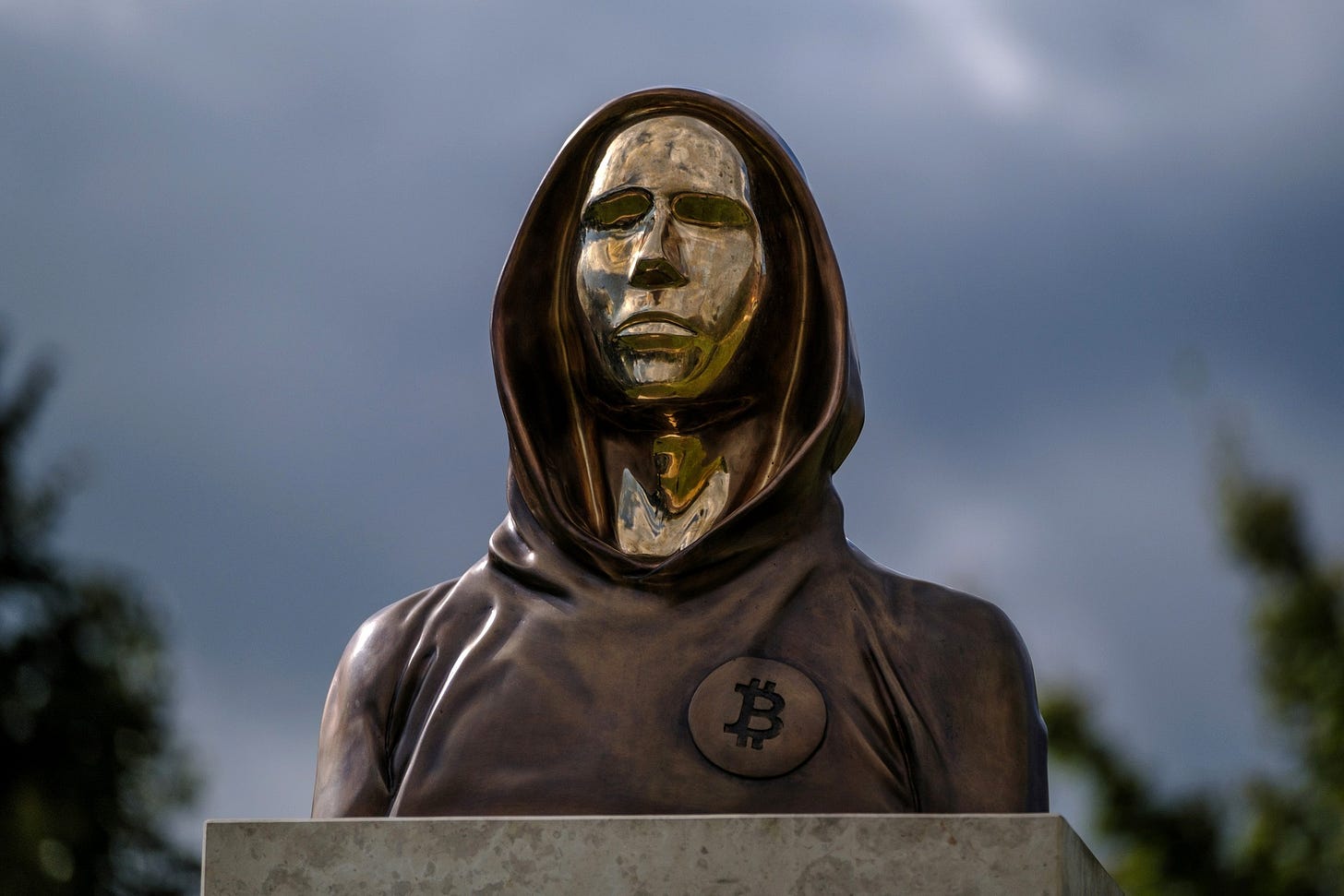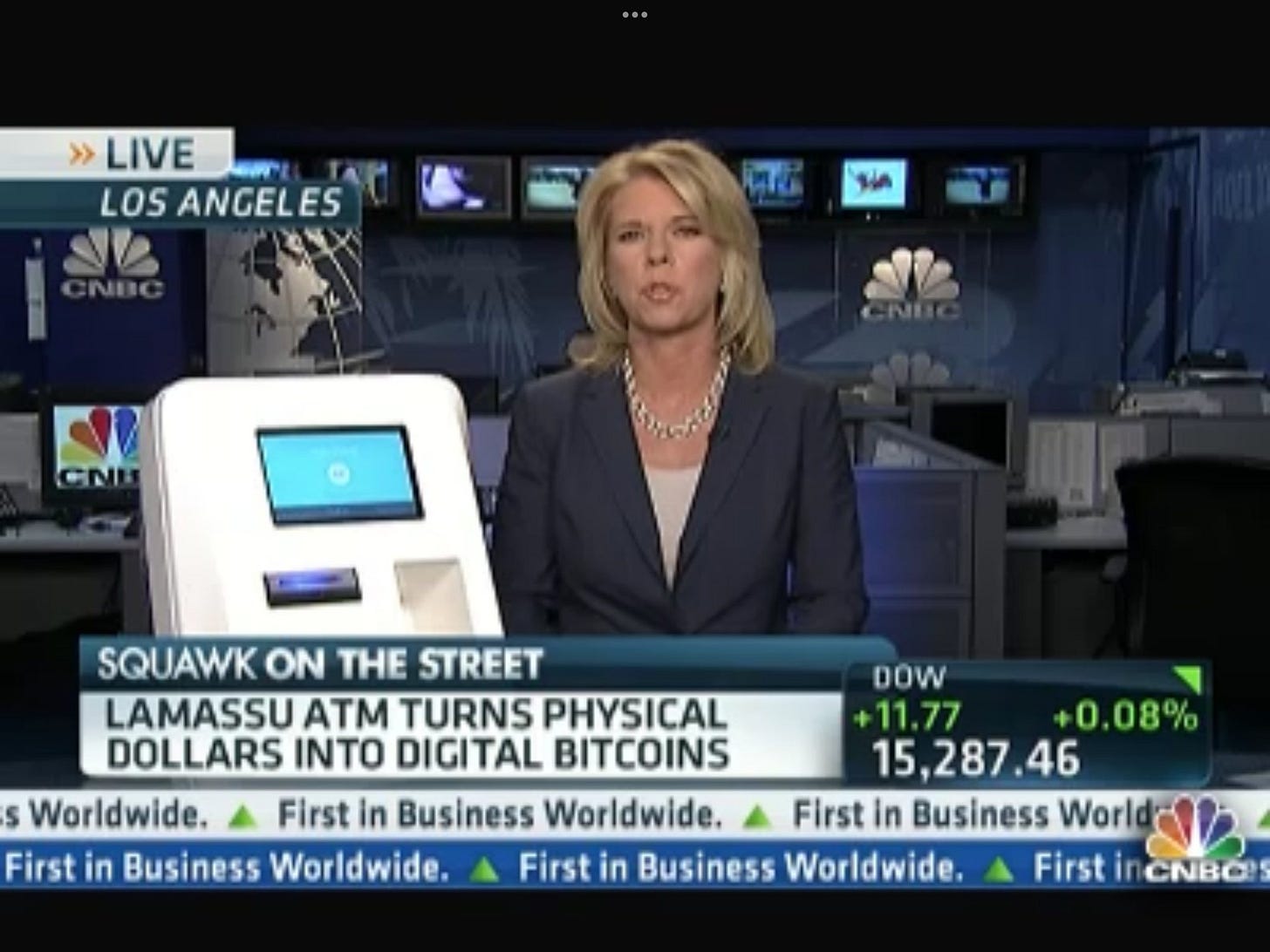Everything You Need to Know About Crypto Today (at least for the next 8 hours!)
An update for beginners AND veteran investors.

Here on Wells $treet we talk about the most interesting and unusual business stories currently making headlines. If you like business news from an offbeat perspective, please subscribe to receive these Bulletins once or twice a week via email for free.
***My goal is to add 500 more subscribers over the next month, so please share this link, and follow me on Twitter, Facebook, Instagram, and LinkedIn.
Don’t be intimidated by my headline if you know nothing about Bitcoin or the Bored Ape Yacht Club. You are in the majority.
Neither should you ignore this article if you’re an experienced investor in crypto and NFTs. What you thought you knew may no longer be valuable.
The crypto landscape is changing quickly, and it‘s hard to keep up. What’s a worthy investment? How can you avoid getting scammed? Why do a bunch of 0s and 1s of computer code creating a digital key for a piece of “art” trade for millions of dollars? #TulipBubble
I talked with my good friend Zack Guzman, a very smart guy (Harvard!) who dove into Bitcoin long before anyone else I know. Zack writes a Bulletin called Crypto Uncomplicated that breaks down the latest trends, from Doge (who?) to DAOs (what?), in language that even I can understand.
“I wanted to start something that just kind of explains things as I do to my friends,” he tells me, “and [I] wanted to create a neutral arena.”
I interviewed him on Facebook Live where he fielded my questions, as well as those from the audience. You can see the entire conversation here:
I’ve distilled the interview down to some key takeaways. In this Wells $treet, Zack updates us on where we stand with digital currencies. And stay tuned for the next column, where we look at what’s on the horizon for NFTs and DAOs, and I‘ll try to get my head around the blockchain.
We start with Bitcoin, which launched this digital financial revolution back in 2009. It ain’t your father’s crypto anymore.
BITCOIN 2.0 — STORING WEALTH
THE HISTORY: In the olden days, which was 30 minutes ago in crypto, the buzz was all about using digital currencies — especially Bitcoin — to buy things. Tesla would accept it, and so would Mastercard and Visa.
But it hasn’t really taken off. People aren’t buying a lotta stuff this way. One reason is the volatility of crypto’s price. Why buy something for the equivalent of $5,000 today when it will only be worth $4,000 tomorrow?
Tesla eventually paused accepting payment in Bitcoin, though it still bought $1.5 billion of the digital currency for its own balance sheet (and made over $100 million selling some at the peak).
ZACK SAYS: He doesn’t think Bitcoin was designed for everyday purchases. Zack believes the creator(s) of Bitcoin designed it as a place to store wealth outside traditional financial systems. “We’ve heard it now described as digital gold.”
BITCOIN 3.0 — BEYOND MONEY
WHAT IF? Imagine a dollar was more than just a dollar. Imagine it could be a contract.
ZACK SAYS: “It’s not just money that you could be programming [into Bitcoin].” Cryptocurrencies will eventually be used to make other financial products, including mortgages and other “smart contracts.” (A “smart contract” is basically a contract made on the blockchain instead of on paper, which makes it smarter!)
JANE ADDS: Moving into these new channels successfully will require less volatility.
HOW TO REDUCE WILD PRICE SWINGS
THE CHALLENGE: I could create a cryptocurrency if I really wanted to. I’d call it JaneCoin. Fun, right?

JaneCoin to the Moon! #DiamondHands
There’s only one problem. Nobody would want anything to do with JaneCoin unless I made a compelling case for it in some fancy “white paper,” where I explain my reasons for the coin, the technology behind it, blah blah blah…
In reality, maybe only four three two people would get on the JaneCoin bandwagon — my husband and kids. Or one kid. Maybe. Such light usage or trading of JaneCoin would make its price swing wildly.
ZACK SAYS: “It’s kind of worthless if you don’t have a community built up around it.”
So the main way to reduce volatility is for more people to use crypto, but how do you get more people to use it when the price is so volatile? “It’s a bit of the chicken and the egg problem.”
JANE ADDS: You have to build trust and attract big players.
And the big players are coming. Billions of dollars have been poured into crypto by large hedge funds, according to the Wall Street Journal, which reports these larger players traded over $1 trillion in digital currencies last year.
At the same time, the industry is building some trust through “stable coins.” These are cryptocurrencies backed by a traditional form of money. In other words, if I released JaneCoin as a “stable coin” tied to the U.S. dollar, I would own an actual dollar in a bank account to back up every JaneCoin I released. People would feel more comfortable knowing that my crypto was 100% backed by the most trusted currency in the world.
Now, to me, this kinda defeats the purpose of creating a digital currency free from banking, but…
ZACK ALSO SAYS: Stable coins marry the trustworthiness of traditional banking with all the fun things you can do with crypto outside of banking (including cutting out traditional fees and payment processing times).
A DIGITAL U.S. DOLLAR? WHY?
THE CHALLENGE: President Biden is finally catching up to crypto FOMO and asking his administration to look into whether there should be a digital version of the U.S. dollar. This would be the most stable of stable coins.
There are several concerns. The first is privacy. “Digital currency issued by a central bank can be used as a tool for government surveillance of citizens and control over their financial transactions,” explains a report in Ars Technica.
Also, having a personal account with the Federal Reserve containing your FedCoin would do an end run around the very customers the Fed exists to serve… the banks. And they wouldn’t like that!
But do we even need a digital dollar? We have the most stable financial system in the world. We already send money all over the internet (#Amazon) with only the occasional snafu. I don’t know about you, but my bank has gotten very good at notifying me about suspicious purchases.
ZACK SAYS: A digital federal currency makes more sense in other countries, like El Salvador, where people have less faith in their governments and financial systems (though El Salvador’s crypto rollout is not going well). It might even be a hedge against inflation, and it could spur greater global adoption.
THE ELON MUSK EFFECT
THE HISTORY: The founder of Tesla and SpaceX may be crypto’s biggest cheerleader, though sometimes Elon Musk’s support is tongue-in-cheek, especially when it comes to Dogecoin, which started as a joke. One tweet from Elon can send a coin’s value “To the Moon!” Or he can send it crashing back down to earth harder than a misfired first-stage rocket, like when he admitted on SNL that crypto is “a hustle.”
But when Tesla added crypto to its balance sheet, that was a game changer.
ZACK SAYS: Musk’s decision to use Bitcoin on its balance sheet as a place to store wealth opened up the concept “as a possibility to other companies.”
THE POWER OF SATOSHI NAKAMOTO
THE HISTORY: There are whisperings that Elon is Bitcoin’s enigmatic creator, who goes by the name Satoshi Nakamoto. Elon has denied it, and Nakamoto’s true identity is the greatest mystery in crypto.
Whoever he/she/they is… are… , Nakamoto reportedly owns about 1 million Bitcoin, or around $41 billion at (let me check) current values. That would make him/her/them the 30th richest person/people in the world, based on Forbes’ list of billionaires, right behind Jeff Bezos’ ex-wife, MacKenzie Scott.
That’s a lotta Bitcoin in one digital wallet.
ZACK SAYS: “If we ever saw anything move out of Satoshi Nakamoto’s wallet, that would be huge.” What would that mean for the price of Bitcoin? “I think you would see it absolutely collapse.”

A statue honoring Satoshi Nakamoto in Budapest/Janos Kummer, Getty Images
CRYPTO’S JEKYLL AND HYDE — UKRAINE AND RUSSIA
A lot has been written about efforts by the U.S and our allies to keep crypto out of the hands of Russians who are facing sanctions. Exchanges like Coinbase and Binance have gotten better at banning bad actors, but both exchanges have turned down a request from Ukraine to freeze all Russian accounts. A Binance spokesperson told CNBC that a blanket ban would harm millions of innocent clients.
ZACK SAYS: He believes crypto’s dark side is being exaggerated. He’s more amazed by the bright side, as we’ve seen in Ukraine, where people are sending crypto to those who are trying to escape their wartorn country. I wrote a similar story last summer about an Afghan interpreter’s heart-stopping escape from Kabul.
ZACK ALSO SAYS: The great thing about Ukrainians with digital wallets is they don’t have to stand in long lines at a bank. They’re not subject to ATM withdrawal limits. And, he says, they can “leave the country and still carry [their] wealth with just a 12-word phrase written down on a piece of paper.”
Speaking of which…
THE IMPORTANCE OF MAINTAINING CUSTODY OF YOUR DIGITAL WALLET
ZACK SAYS: If you own some crypto, you might want to maintain custody of your assets instead of storing your holdings on an exchange. Coinbase went offline for a time last October, and Forbes reports, “Leading exchanges like Binance and KuCoin have been hacked, resulting in tens of millions of dollars in losses.“
These exchanges claim to have enough liquidity to handle a lot of people wanting to sell their crypto, but do we want to put that to the test? “It’s always safer to really own it yourself,” Zack says. He also suggests that if you do use an exchange, use more than one. Spread your crypto around.
JANE ADDS, WITH ANGUISH: If you decide to maintain custody of your wallet, don’t forget where it’s stored online or the key you need to access it!!!!
Why four exclamation points???
Let me tell you a personal story.
I allegedly owned $5 worth of Bitcoin in 2013 following a story on Bitcoin ATMs (you have to watch it just for the hair). Fast forward to 2022, and that $5 would now be worth $1,700. But I can’t find it, and believe me, I’ve looked all over the interwebs. A co-worker thinks that maybe I never really owned it, that the guys demonstrating the ATM gave me a dummy account. I hope she’s right, because right now I feel like the dummy.

May, 2013. Dow 15,000!
Up next: NFTs are more than a Bored Ape, and when is the SEC going to stop the party? For a deeper dive into all things crypto, subscribe to Zack’s Bulletin.




